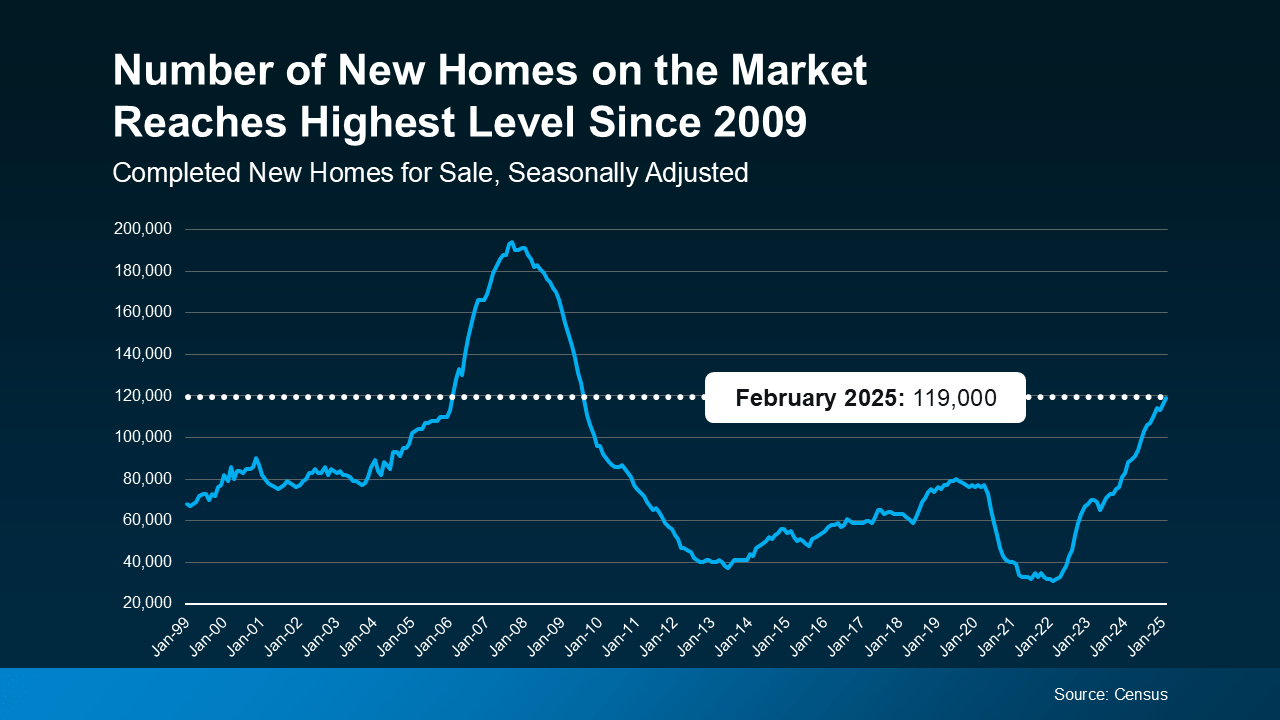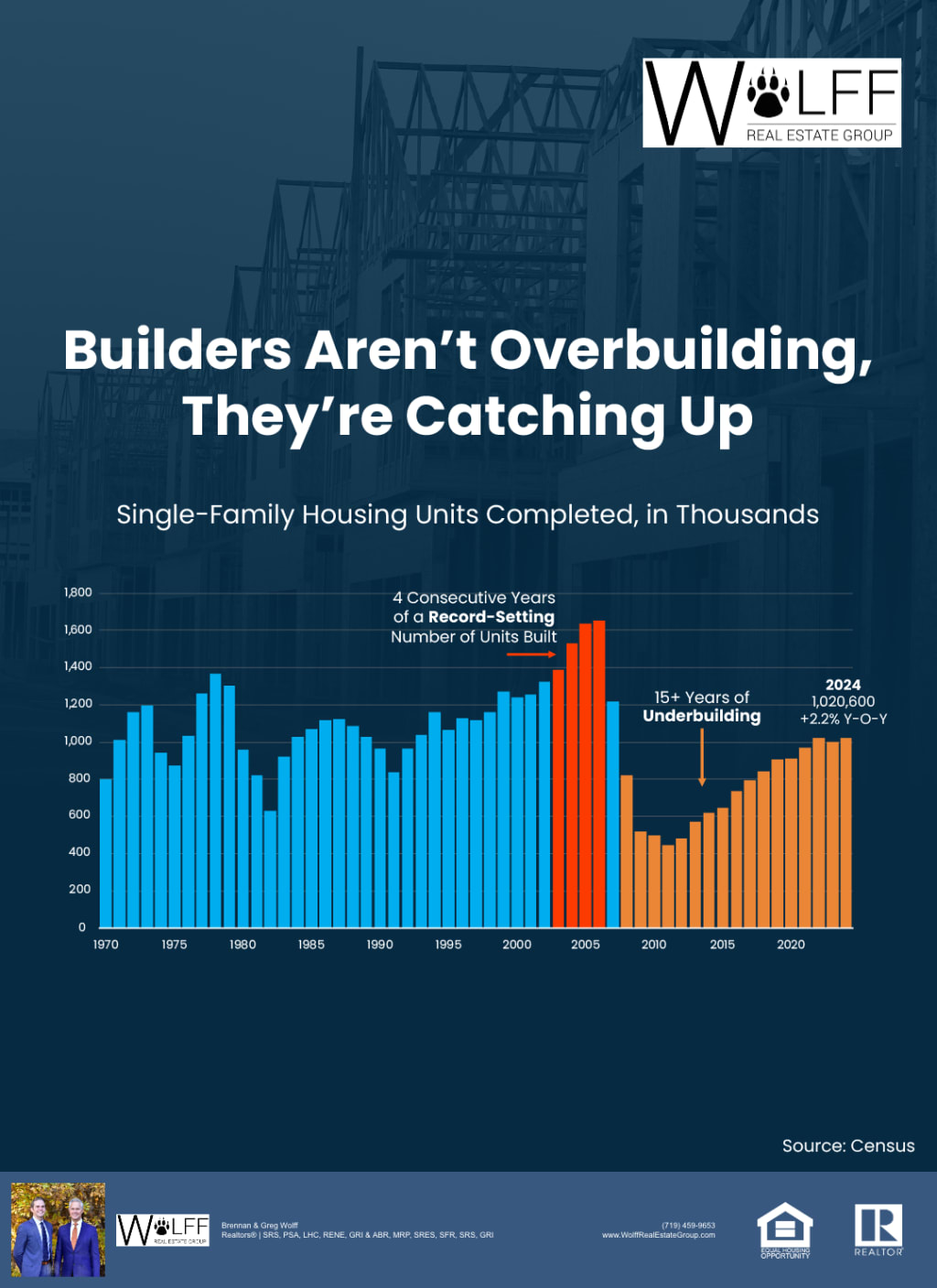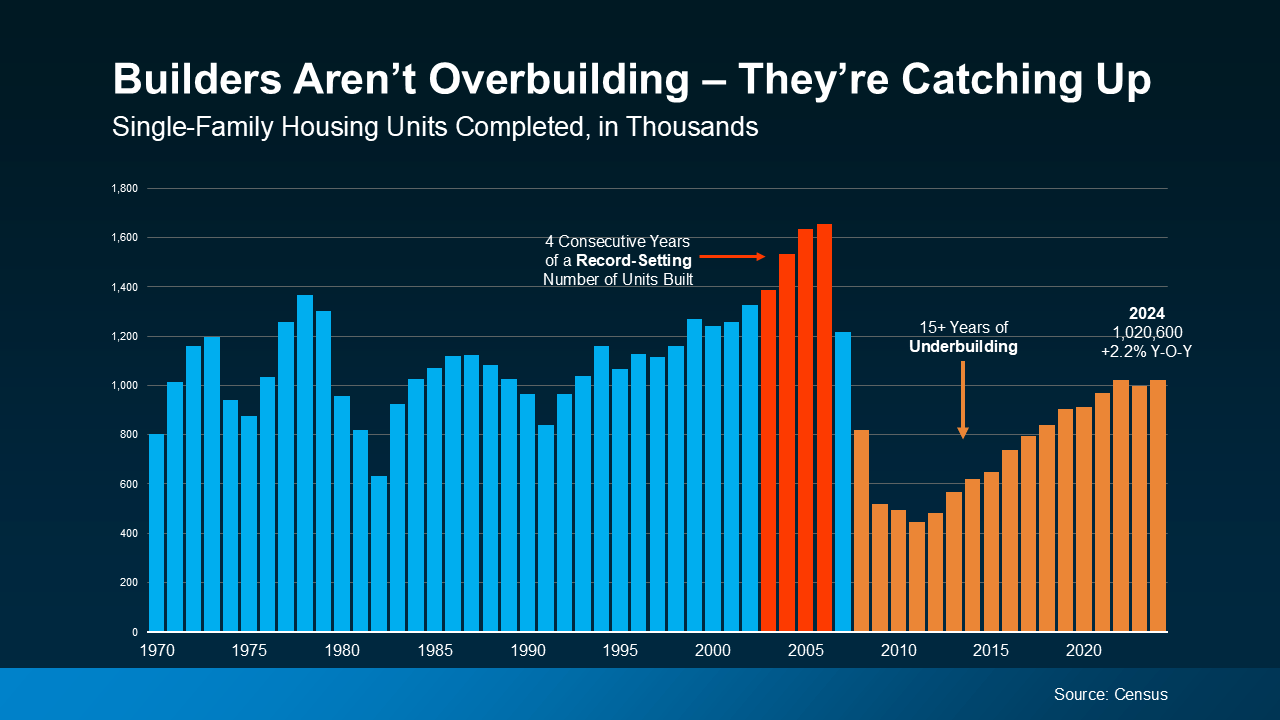New Construction Homes in Northern Colorado Springs
🏗️ What New Construction Really Looks Like in Northern Colorado Springs

Headlines about new home inventory have some buyers and sellers asking if we’re heading toward another 2008. But here in Northern Colorado Springs—specifically across 80921, 80908, and 80132—the data tells a very different story.
We’re not seeing oversupply. We’re seeing builders finally catching up after more than a decade of underbuilding. Let’s break down what’s really happening in our local market, and how today’s new construction landscape offers real opportunity for informed buyers.
📍 Where the New Builds Are Happening
As of early April:
-
79 new construction homes are actively listed
-
37 more are already under contract or pending
-
155 new construction homes have sold in the past 180 days
Here’s where most of the activity is concentrated:
-
80921: 10 new builds, with 7 in Flying Horse — a community known for upscale amenities and builder incentives
-
80908: 49 homes, primarily in Winsome and Homestead at Sterling Ranch, offering scenic lots and semi-custom builds
-
80132: 57 homes, mostly in Jackson Creek, one of the most active and accessible communities for Monument buyers
⏱️ New Builds Take Time — So Don’t Let Days on Market Mislead You
One of the most important things to understand about new builds is how days on market (DOM) is calculated. Because many homes are listed before they’re finished, they can appear to “sit” longer, even if demand is strong.
-
Median DOM for active/pending new builds: 117 days
-
Median DOM for new builds sold in past 180 days: 103 days
-
Median DOM for resale homes: 27–39 days
This doesn’t mean new builds are struggling—it means buyers are purchasing during the build process.
🛠️ What’s Driving Buyer Demand for New Construction?
Despite higher mortgage rates and economic caution, many buyers are still gravitating toward new builds for a few key reasons:
-
🛋️ Updated floor plans and finishes
-
💡 Energy efficiency and lower maintenance costs
-
💰 Builder-provided financing incentives, including rate buy-downs
-
🔧 Warranty coverage, giving buyers peace of mind in the early years
When comparing a slightly older home with a standard layout and deferred maintenance to a brand-new home with a custom kitchen and a lower interest rate, many buyers find the choice easy.
📈 Builder Behavior in 2025: Responsive, Not Risky
According to a February 2025 report from KOAA, building permits for single-family homes are up 15% year-over-year in El Paso County. That’s not reckless overbuilding—it’s a course correction.
Most of our local builders are releasing semi-custom and spec homes, allowing some flexibility on finishes and upgrades. A smaller number of fully custom homes are also being built, though those naturally come at a higher price point.
Builders are responding cautiously to buyer demand—not flooding the market with inventory. And with many consumers still constrained by affordability concerns, they’re offering strong incentives to move inventory steadily.
🧭 Advice for Buyers Comparing New vs. Resale Homes
Here’s what I tell clients evaluating whether to go new or resale in our current market:
✔️ Do:
-
Vet the builder’s reputation. Read reviews, visit past developments, and ask about post-closing support.
-
Understand the warranty. Not all warranties are equal—know what’s covered and for how long.
-
Review all financing options. Builder rate buy-downs can be great—but let’s compare them with traditional lenders.
-
Be realistic about timeline. If the home isn’t finished, plan for delays and flexibility.
🚫 Don’t:
-
Assume you can negotiate like you would with a private seller. Builders typically hold firm on pricing but may offer incentives in the form of upgrades, closing cost assistance, or rate buydowns.
-
Skip representation. Builders often prefer buyers work directly with their sales agents—but having your own real estate advocate matters more than ever.
🏡 Final Thought
New construction isn’t a red flag in Northern Colorado Springs—it’s a long-overdue response to demand in one of Colorado’s most desirable markets. Whether you’re buying your first home, moving up, or just seeking a fresh start with low maintenance, new builds offer flexibility and long-term value—as long as you work with someone who knows how to navigate the process.
📩 Interested in what’s being built in your favorite neighborhoods? Let’s connect—I'll help you compare options, tour models, and build a strategy that fits your lifestyle and your budget.
📊 How Does This Compare Nationally?
Here’s the latest national take from Keeping Current Matters, which helps put our local trends in context:
The Truth About Newly Built Homes and Today’s Market
Headlines are talking about the inventory of new homes and how we’re back at the levels not seen since 2009. And maybe you’re reading that and thinking: oh no, here we go again. That’s because you remember the housing crash of the late 2000s and you’re worried we’re repeating the same mistakes.
But before you let fear take hold, remember: headlines are designed to be clickbait. And a lot of the time, they do more to terrify than clarify. That’s because they don’t always give you all the context you need. So, let’s take a step back and look at what the data really says.
Why This Isn’t Like 2008
While it’s true the number of new homes on the market has reached its highest level since 2009, that’s not a cause for alarm.
Here’s the context that matters most. When the data is turned into a graph, it’s clear the amount seen in 2009 wasn’t the peak of oversupply – not even close. That high point came earlier in 2007-2008. If anything, 2009 was when the number of new homes being built was really starting to slide back down (see graph below):
 The overbuilding that contributed to the housing crash happened in the years leading up to 2008. Not in 2009. At that point, construction was already slowing down. So, saying we’ve hit 2009 levels isn't the same thing as saying we’re overbuilding like we did the last time.
The overbuilding that contributed to the housing crash happened in the years leading up to 2008. Not in 2009. At that point, construction was already slowing down. So, saying we’ve hit 2009 levels isn't the same thing as saying we’re overbuilding like we did the last time.
Builders Have Actually Underbuilt for Over a Decade
Here’s some more data to prove it to you. After the crash, builders pulled production way back. As a result, they built far fewer homes than the market needed. And that was a consistent problem that lasted for over a decade. That long stretch of underbuilding created a major housing shortage, which is still a challenge today.
The graph below uses Census data to show the number of new homes built each year over the past 52 years. You can clearly see the overbuilding leading up to the crash (in red), the period of underbuilding that followed (in orange), and how we’re only now getting back to a more normal level of construction:
Today’s situation is different. Builders aren’t overbuilding – they’re catching up.
In a recent article, Odeta Kushi, Deputy Chief Economist at First American, highlights this deficit and speaks to why the recent ramp-up in construction is actually good for today’s market, especially buyers:
“This means more homes on the market and more options for home buyers, which is good news for a housing market that has been underbuilt for over a decade.”
Of course, like anything else in real estate, the level of supply and demand will vary by market. Some markets may have more newly built homes, some less. But, nationally, there’s nothing to worry about. This isn’t like the last time.
Bottom Line
No matter what you’re reading or seeing, the growing number of newly built homes on the market isn’t a red flag nationally – it's a sign builders are starting to make up for years of underbuilding. If you want to talk about what’s happening in our market, let’s connect.





